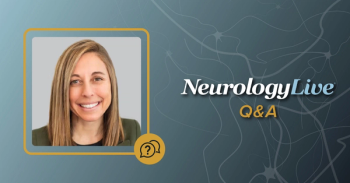
Growing Pains Identified as Early Symptom of Migraine Among Children and Adolescents
Findings from a recent study showed that pain in the lower limbs of children and adolescents, commonly referred to as growing pains by providers, may reflect a precursor or comorbidity with migraine.
Newly published in Headache, findings from prospective study demonstrated that pain in the lower limbs of children and adolescents was significantly associated with migraine among children and adolescents. These findings suggest that this pain, referred to as “growing pains” by clinicians, may indicate the presence or risk of migraine in this patient population.1
After 5 years of follow-up with 78 patients, headaches occurred in 76% of participants who had growing pains (n = 42) and in 22% of controls (n = 36)(P <.001). Notably, growing pains persisted in 14% of participants who had growing pains at the beginning of the study and appeared in 39% of participants who were previously asymptomatic (P = .026).
Lead author Raimundo Pereira Silva-Néto, MD, PhD, MSc, adjunct professor at Federal University of Delta do Parnaiba, in Piaui, Brazil and colleagues wrote, “In families of children with growing pains, there is an increased prevalence of other pain syndromes, especially migraine among parents. On the other hand, children with migraine have a higher prevalence of growing pains, suggesting a common pathogenesis; therefore, we hypothesized that growing pains in children are a precursor or comorbidity with migraine.”2
The study was a cross-sectional, prospective, longitudinal cohort group comparison where researchers reviewed and characterized growing pains among children and adolescents as a potential precursor or comorbidity with migraine. A sample of 100 children/adolescents born to mothers with migraine seen at a headache clinic were recruited in a random order chosen by lot, maintaining the ratio of 1:1 for those with growing pains (n = 50) and controls (n = 50).
READ MORE:
Participants were interviewed from February to November 2017 and then again by the same neurologist after 5 years of follow-up, from October to December 2022, to investigate the onset of headache and confirm the diagnosis of migraine. All patients underwent a normal physical examination, laboratory data, and radiological studies to confirm the diagnosis of growing pains. Then, the sample was reassessed and submitted again after 5-year follow-up to the same questionnaire for diagnostic confirmation.
Results from the follow-up demonstrated that 51% of participants had migraine without aura (n = 40), according to International Classification of Headache Disorders, 3rd edition (ICHD-3).3 Among the patients in the growing pains group, a primary headache disorder including migraine without aura occurred in 76% of the patients (n = 32), compared with 22% of controls (n = 8; P <.001). The fulfillment of the ICHD-3 diagnostic criteria for migraine without aura occurred in 69% of patients in the growing pains group (n = 22) and 25% in the control group (n = 2)(P = .004).
Authors noted several study limitations including potential selection biases, a lack of age- and sex-matched controls, a small number of participants, a significant time gap between interviews leading to recall issues, a nonblinded evaluator, challenges in collecting clinical data related to childhood migraines, and limited prior research to guide the study. Additionally, the sampling strategy involving children of mothers with migraines might strongly influenced the findings because of genetic predisposition and possibility of the children mimicking headache symptoms when observing their mothers during attacks.
“Pain in the lower limbs of children and adolescents... may reflect a precursor or comorbidity with migraine,” Silva-Néto and colleagues noted.2
REFERENCES
1. Are children’s growing pains tied to migraines?. News release. Wiley. Published September 6, 2023. Accessed September 11, 2023. https://newsroom.wiley.com/press-releases/press-release-details/2023/Are-childrens-growing-pains-tied-to-migraines/default.aspx
2. Silva-Néto RP, Soares AA, Souza WPO, Krymchantowski AG, Jevoux C, Krymchantowski A. "Growing pains" in children and adolescents as an early symptom of migraine: A prospective study. Headache. 2023;10.1111/head.14608. doi:10.1111/head.14608
3. Headache Classification Committee of the International Headache Society (IHS) The International Classification of Headache Disorders, 3rd edition. Cephalalgia. 2018;38(1):1-211. doi:10.1177/0333102417738202
Newsletter
Keep your finger on the pulse of neurology—subscribe to NeurologyLive for expert interviews, new data, and breakthrough treatment updates.



























